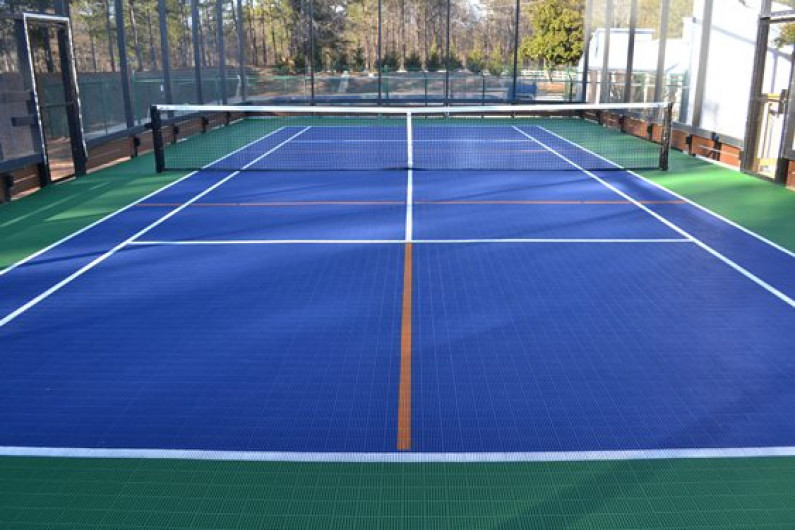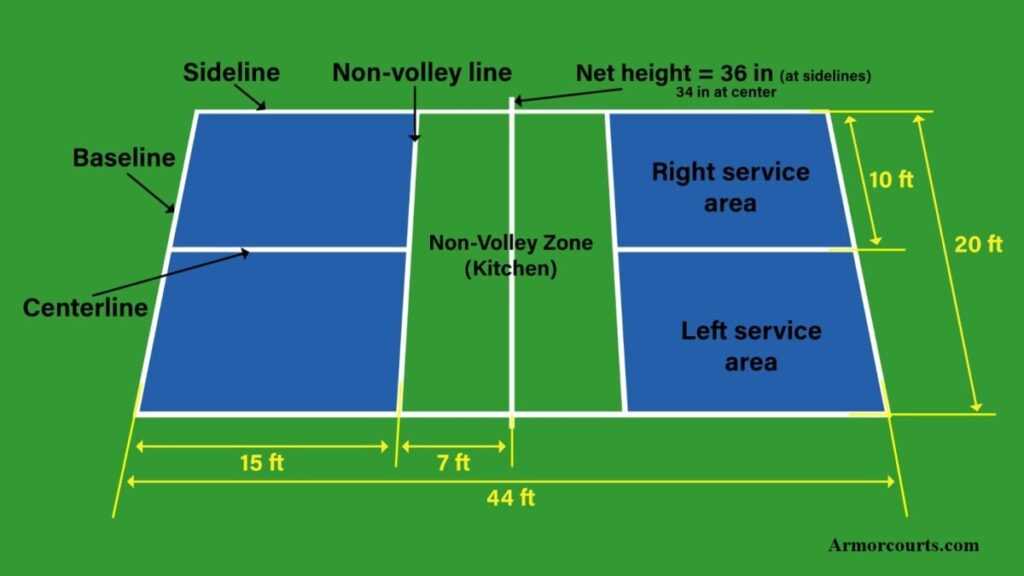Expert Pickleball Court Construction-- From Design to Setup
Expert Pickleball Court Construction-- From Design to Setup
Blog Article
Lasting Practices in Pickleball Court Building And Construction You Need To Know
As the popularity of pickleball continues to climb, so as well does the requirement for sustainable practices in court construction. This method not only addresses environmental concerns yet additionally enhances the durability and performance of the courts. From selecting environmentally friendly products to applying efficient water drainage and energy-saving lights solutions, there are countless methods to think about. Yet, the influence of these methods extends much beyond the court itself. Comprehending how each aspect adds to an extra sustainable future invites even more expedition into the complex equilibrium between recreational growth and ecological stewardship.
Selecting Eco-Friendly Products
Selecting eco-friendly materials is a crucial action in the construction of sustainable pickleball courts. The choice of sustainable materials not just lessens environmental impact however likewise improves the long life and performance of the court. Key products include recycled rubber for the surface area, which supplies excellent toughness and shock absorption while drawing away waste from garbage dumps.
Furthermore, using in your area sourced materials lowers transport discharges and supports local economies. Pickleball court construction. Using native hardwoods for fencing and seats can offer a sustainable aesthetic while making sure strength versus the components.
Including permeable materials for court structures can even more add to sustainability by enabling all-natural water drainage and lowering runoff. These options not just secure local ecosystems however also promote much healthier play environments.
Effective Drain Solutions
While the option of environment-friendly materials is vital, applying reliable drain options is just as vital for keeping lasting pickleball courts. Correct drainage not only safeguards the court surface from water damage but also reduces erosion and runoff, promoting ecological integrity.
Effective water drainage systems can consist of permeable paving, which enables water to penetrate the ground as opposed to merging externally. This reduces the likelihood of standing water, which can bring about mold and mildew and other maintenance concerns. Furthermore, integrating tactically placed drain channels and swales can route excess water far from the court area, guaranteeing a completely dry playing surface area and preventing soil erosion.
Utilizing indigenous plant life in the landscaping around the courts can even more improve water drainage by soaking up excess water and minimizing overflow. These plants need less irrigation and promote biodiversity, aligning with sustainable practices.
Furthermore, it is important to frequently maintain the water drainage system to ensure its lasting effectiveness. This consists of cleaning particles and surveillance for blockages. By focusing on effective drain remedies, pickleball court constructors can considerably add to the sustainability and long life of the center, eventually benefiting both gamers and the atmosphere.
Energy-Efficient Lights Options
As the need for pickleball continues to grow, integrating energy-efficient lights choices into court style has become progressively essential for sustainability. Conventional lights systems often take in excessive power, adding to greater operational expenses and ecological effect. Embracing contemporary, energy-efficient modern technologies is crucial for both brand-new constructions and remodellings.
LED (Light Emitting Diode) illumination stands out as a premier choice because of its longevity and power cost savings (Pickleball court construction). Compared to conventional lights, LEDs utilize around 75% much less power and can last as much as 25 times much longer, considerably lowering maintenance expenses. The directional nature of LED lighting decreases light air pollution, making certain that illumination is focused on the court rather than surrounding areas.

Lasting Surface Area Alternatives
Discovering lasting surface options for pickleball courts has actually acquired traction among gamers and home builders browse around these guys alike. The focus on eco-friendly materials not only straightens with the expanding environmental recognition yet additionally improves the efficiency and toughness of the courts.
One prominent choice is the usage of recycled rubber, which can be sourced from used tires. This product provides superb shock absorption, decreasing the threat of injuries for players while promoting sustainability. Furthermore, modular tiles made from recycled plastics offer one more viable option. These tiles are easy to install and change, and their versatility permits different court configurations.
All-natural turf courts are also arising as a lasting choice, promoting biodiversity and minimizing the warm island effect. They need regular maintenance and water, which might not line up with all sustainability objectives.

Water Conservation Methods

An additional reliable technique involves the installation of rainwater harvesting systems. These systems keep and accumulate rainwater for usage in maintaining court surfaces and landscaping. This strategy not just saves potable water but likewise decreases reliance on municipal resources.
Additionally, utilizing drought-resistant landscaping around the courts is crucial. Native plants call for much less water and are much better adapted to neighborhood environment conditions, hence reducing overall water usage. In addition, using reliable watering systems, such as drip irrigation, makes sure that water is provided straight to plant origins, minimizing dissipation and waste.
Final Thought
Integrating sustainable methods in pickleball court construction significantly adds to click now environmental preservation and resource effectiveness. By focusing on these practices, the construction of pickleball courts can line up with broader environmental goals while promoting longevity and functionality within communities.
As the popularity of pickleball continues to climb, so too does the demand for lasting practices in court building and construction.Picking eco-friendly materials is a vital action in the building and construction of lasting pickleball he has a good point courts. By focusing on energy-efficient lights alternatives, pickleball court contractors can contribute to a more lasting future while fulfilling the demands of gamers and stakeholders alike.Integrating sustainable surface area choices not just improves the performance of pickleball courts but also leads the method for carrying out efficient water conservation strategies.Integrating sustainable techniques in pickleball court building considerably adds to ecological preservation and source effectiveness.
Report this page